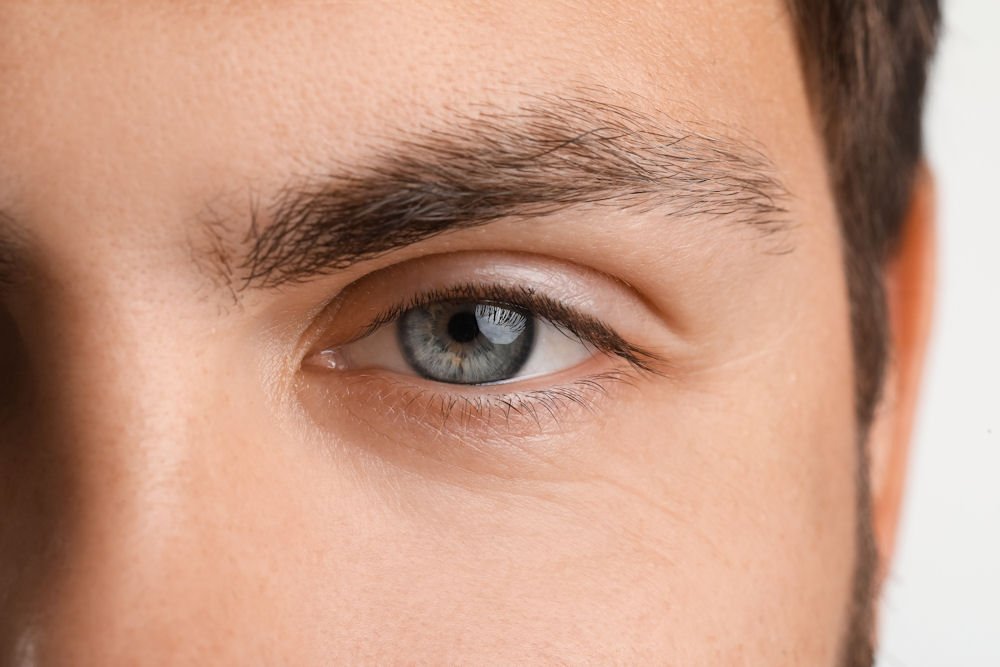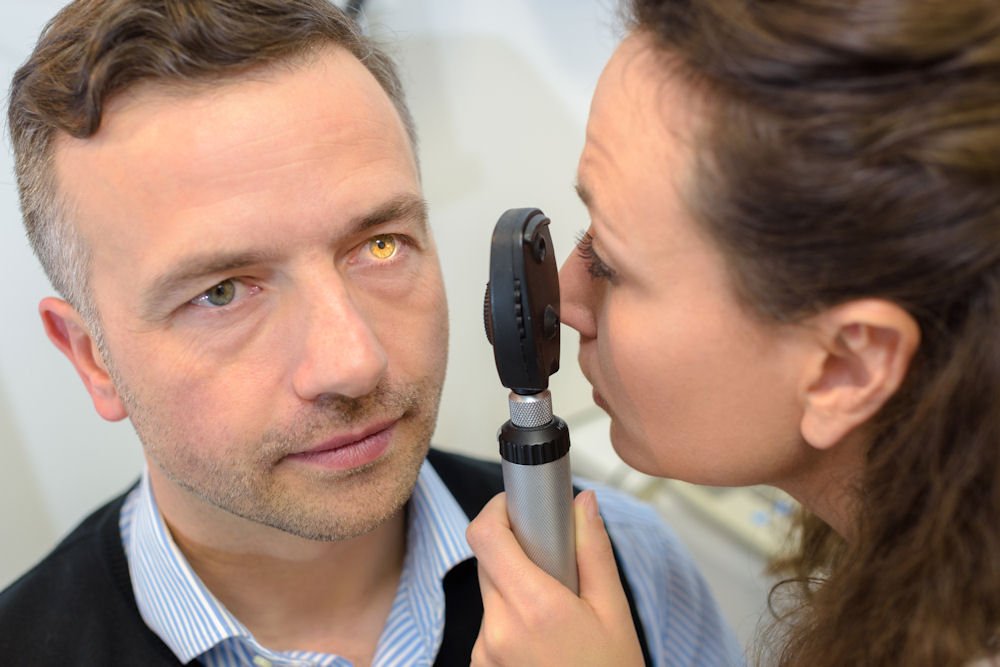It’s important to discuss how addiction to alcohol, illicit drugs, and even recreational drugs can affect the health of a person’s eyes. The eyes are often called the windows to the soul. But they can also reveal important clues about a person’s substance use.
Understanding how different drugs affect the eyes can help healthcare professionals identify potential substance misuse and provide appropriate support and treatment. For example, marijuana use can cause bloodshot eyes due to the dilation of blood vessels in the eyes, leading to a red or pink appearance.
For example, cocaine is a stimulant drug that can constrict blood vessels, potentially causing decreased blood flow to the eyes and resulting in vision problems. Certain drugs can also affect the muscles that control eye movement, leading to issues with coordination and focus.
In some cases, chronic drug use can even lead to permanent vision loss or blindness. Understanding these connections between substance abuse and eye health is crucial in identifying potential warning signs and providing appropriate interventions to protect a person’s overall well-being.
At Golden Gate Recovery located in Marin County, California, our men’s rehab center is dedicated to helping people recover from drug and alcohol addiction through a variety of evidence-based treatment programs and counseling services.

It is important to note that the effects of drug abuse are not limited to just vision, but also to the major body system to which the eyes are connected. The nervous system is a complex network that controls everything from movement to emotions, and drug abuse can have far-reaching consequences. Opioids like heroin can depress the central nervous system, leading to slower breathing and heart rate. This can have serious implications for overall health, as decreased oxygen levels in the body can impact cognitive function and lead to coma or death.
Chronic drug use can lead to changes in the structure and function of the brain, affecting memory, decision-making, and emotional regulation. These changes can persist long after the individual has stopped using drugs, highlighting the long-term consequences of addictions to certain substances.
Each drug has its unique physiological impact on the eyes. For instance, marijuana use can cause bloodshot and dry eyes due to its impact on blood flow and tear production. Opioids, on the other hand, can cause extremely constricted “pinpoint” pupils.
On the other side, addictive stimulants (such as cocaine and amphetamines) can lead to dilated pupils and involuntary rapid eye movements. This is because these substances increase the release of certain neurotransmitters in the brain, affecting the muscles that control pupil size and eye movements. The dilation of pupils can also be a sign of overdose, indicating a potential emergency that requires immediate medical attention.
Eyes can provide general insights into a person’s overall health and well-being. Bloodshot eyes can be a sign of various underlying issues, including fatigue, allergies, or even high blood pressure. Yellowing of the eyes (known as jaundice) can be a symptom of liver problems such as hepatitis or cirrhosis, which can be linked to alcohol abuse.

Addiction can have a profound impact on the eyes, beyond just the physical manifestations. Prolonged drug abuse can lead to serious eye conditions that include permanent vision loss. The delicate blood vessels in the eyes can become damaged, leading to a range of visual disturbances and potential long-term consequences.
Moreover, the impact of drug addiction on the eyes extends beyond the physical sense. It can also affect a person’s mental health and emotional well-being. For many individuals struggling with addiction, the eyes can mirror the inner turmoil and distress they may be experiencing. The shame, guilt, and despair associated with substance abuse can often be seen in the eyes, serving as a poignant reminder of the complex interplay between physical health, mental health, and addiction.
Furthermore, the eyes can reveal emotional and psychological states beyond addiction. Prolonged periods of drug or alcohol abuse can lead to noticeable changes in the eyes, such as a lack of focus or clarity, which may indicate cognitive impairment. Additionally, individuals struggling with addiction may exhibit avoidance of eye contact or rapid, erratic eye movements, reflecting feelings of shame, guilt, or anxiety. Understanding these nuanced cues can help healthcare professionals and loved ones better support individuals in need of assistance.
The iris is a fascinating part of the eye that not only controls the size of the pupil but also gives our eyes its unique color. The color of the iris is determined by the amount of melanin present in the iris pigment epithelium, with higher concentrations resulting in darker eye colors such as brown or black, while lower concentrations lead to lighter eye colors like blue or green.
In addition to external factors like lighting and emotions, the body’s internal clock, known as the circadian rhythm, also plays a role in pupil size. Pupils tend to dilate in low light conditions to allow more light to enter the eye and constrict in bright light to prevent an overwhelming amount of light from entering. This automatic adjustment helps to optimize vision and protect the delicate structures within the eye.
Furthermore, certain medical conditions can also impact pupil size. For example, individuals with conditions such as Horner’s syndrome may experience a constricted pupil due to damage to the sympathetic nerves that control the iris muscles. On the other hand, conditions like Adie’s pupil can cause one pupil to be larger than the other, a condition known as anisocoria.
Addiction to drugs not only affects the general health of the eyes but can also impact overall visual acuity and eye function. For instance, stimulant drugs like cocaine can lead to severe eye infections and even permanent vision impairment due to the drug’s vasoconstrictive properties, which restrict blood flow to the eyes. This reduced blood flow can result in damage to the optic nerve and other vital structures within the eye, leading to irreversible vision loss if left unchecked. Conditions like depression and anxiety can manifest in physical symptoms that affect the eyes, such as eye twitching, light sensitivity, and blurred vision.
Many drugs can cause changes in the eyes, either temporarily or permanently. Not every person will experience these side effects from specific substances, and early intervention with appropriate treatment can help avoid the worst of damage. But it’s important to note that drug use affects much more than the brain and nervous system and may in fact cause a vision problem or a permanent loss of vision.
Let’s take a closer look at some commonly misused drugs and their specific effects on pupils:
These changes to the eyes can provide valuable insight into a person’s recent drug use and help healthcare professionals assess the severity of substance misuse. Mental health conditions often co-occur with substance use disorders, further complicating the issue and requiring dual diagnosis treatment. Conditions like depression and anxiety can manifest in physical symptoms that affect the eyes, such as involuntary eye movements, light sensitivity, and blurred vision. Addressing both substance abuse and the associated mental health issues is crucial in preserving not only a person’s eyes but overall well-being.
Substance abuse not only affects eye health but can also impact overall visual acuity and eye function. The detrimental effects of prolonged drug use on the eyes are vast and multifaceted.

If you or someone you know is struggling with substance abuse, seeking professional help is crucial. Golden Gate Recovery offers comprehensive addiction recovery programs tailored to meet each individual’s unique needs. Our compassionate team of experts will support you through every step of your recovery journey, helping you regain control of your life and achieve lasting sobriety. Take the first step towards a brighter future at Golden Gate Recovery today.
Get confidential help! Call Us Now for:

Golden Gate Recovery is a grass roots organization created by men in long term recovery with a simple mission: to continue strengthening our therapeutic and peer led community toward the goal of long term recovery for each client.